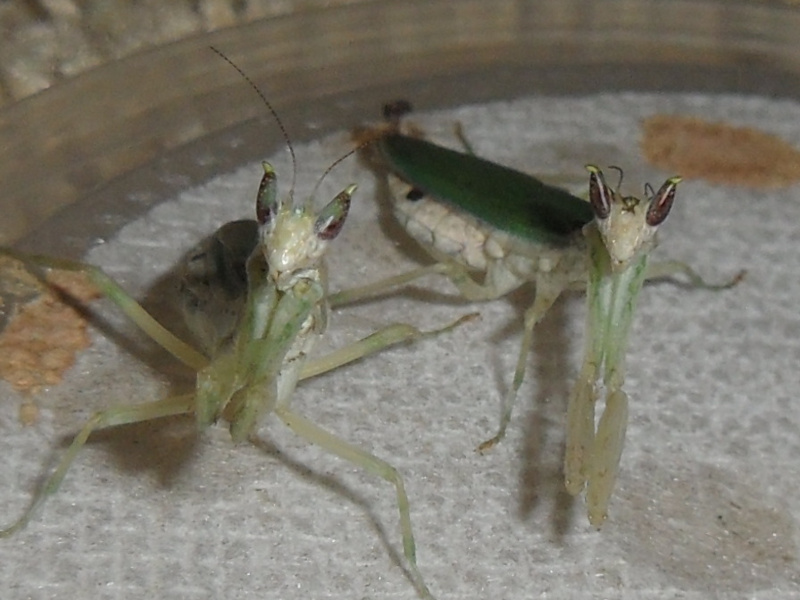Gambian Spotted-Eye Flower Mantis Facts
- Firstly, the Gambian Spotted-Eye Flower Mantis takes its name from two eyespots on the dorsal side of the abdomen of adult females.
- This species also ranks as less aggressive than most species of mantis, except during feeding when it becomes merciless.
- Rather uniquely, its eyes actually change color from day to night. At night they are dark red but during the day they are light green.
- Although it inhabits a somewhat limited range, its numbers remain sufficient enough to hold no current listing on the IUCN Red List.
Related Articles
Gambian Spotted-Eye Flower Mantis Physical Description
Although stunning, the Gambian Spotted-Eye Flower Mantis remains much smaller than most species of mantis.
At most, individuals attain a length of about 1.2 inches (3 cm). Due to the reproductive intensity, the females are generally slightly longer and heavier than the males.
Displaying sexual dimorphism, females also have shorter antennae, while males have long and red antennae.
Females also have two dots on the abdomen as adults, while males, whose abdomens are thin, and covered completely by the wings when looked at from above, appear to have none.
Its camouflage has evolved to mimic flowers and the insect is very successful at being inconspicuous. The color is primarily white, and the wings are green.
- Kingdom: Animalia
- Phylum: Arthropoda
- Class: Insecta
- Order: Mantodea
- Family: Hymenopodidae
- Genus: Pseudoharpax
- Species: P. virescens
Gambian Spotted-Eye Flower Mantis Distribution and Ecology
The rather stunning Gambian Spotted-Eye Flower Mantis is a species of praying mantis endemic to Central, East and West Africa.
This arthropod can live together with limited cannibalism, sometimes without it when a reliable food source is present.
Individuals become very fast and skittish when young, but when older, they become rather calm, compared to related species.
Adult males are skittish and strong fliers. These will sway sideways in the wind to imitate foliage and they move the antennae back and forth very fast while moving around.
The creature also evolved as aggressive predators, with adult females willing to tackle prey as large as themselves.
Males are much more timid in nature, so they need smaller prey items than females will take.
The Gambian Spotted-Eye Flower Mantis is also an insect that breeds very rapidly. The female usually lays a mass of eggs every 3-4 days during the mating season.
Species Sharing Its Range
Check out our other articles on 3 Wonderful Woody Shrubs of Australia, Ghost Mantis, Devetashka Cave, Impatiens Bequaertii

